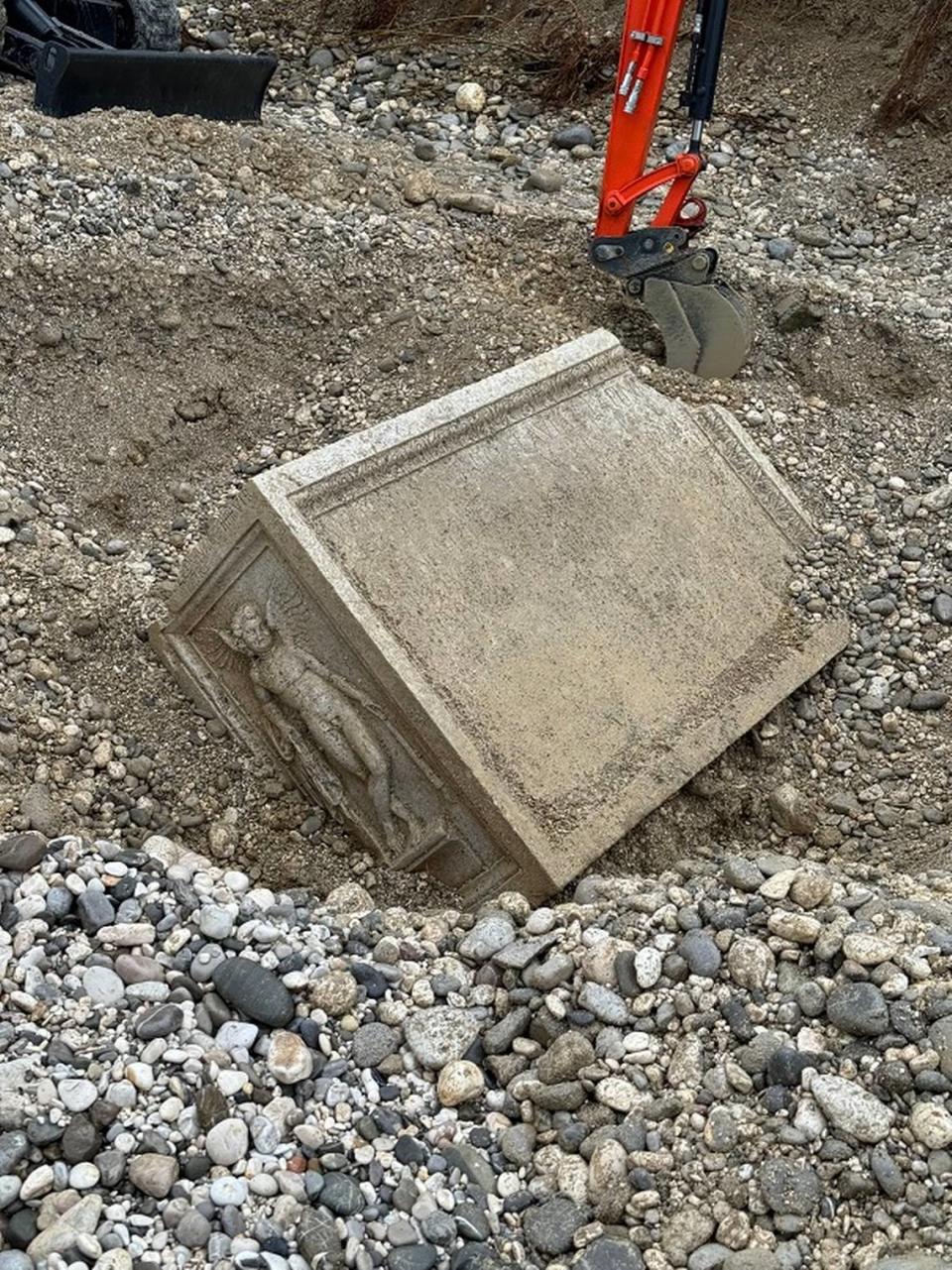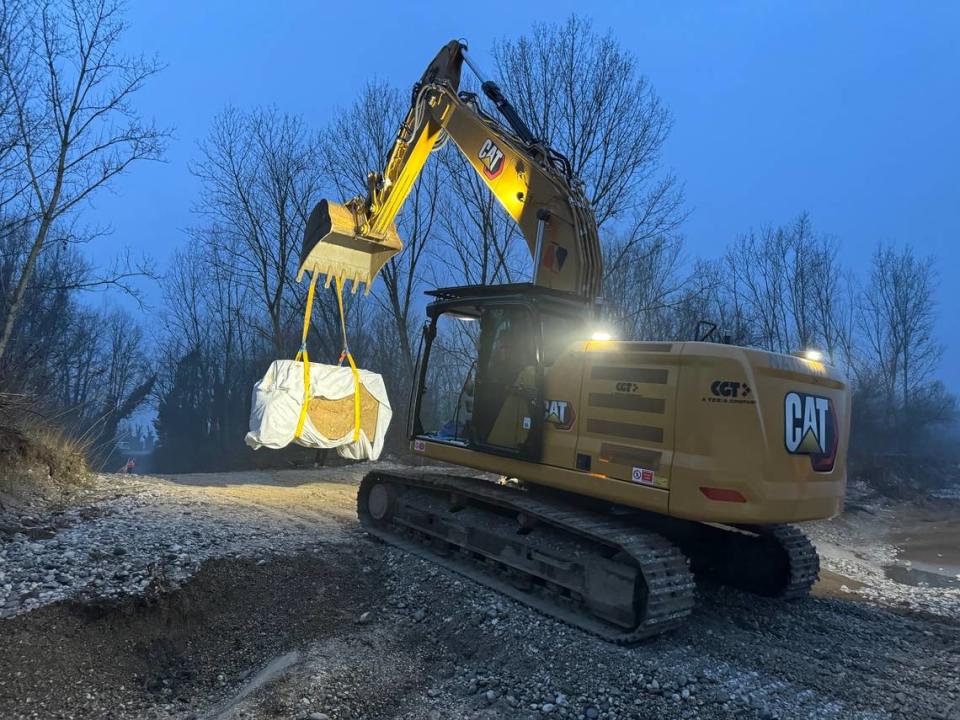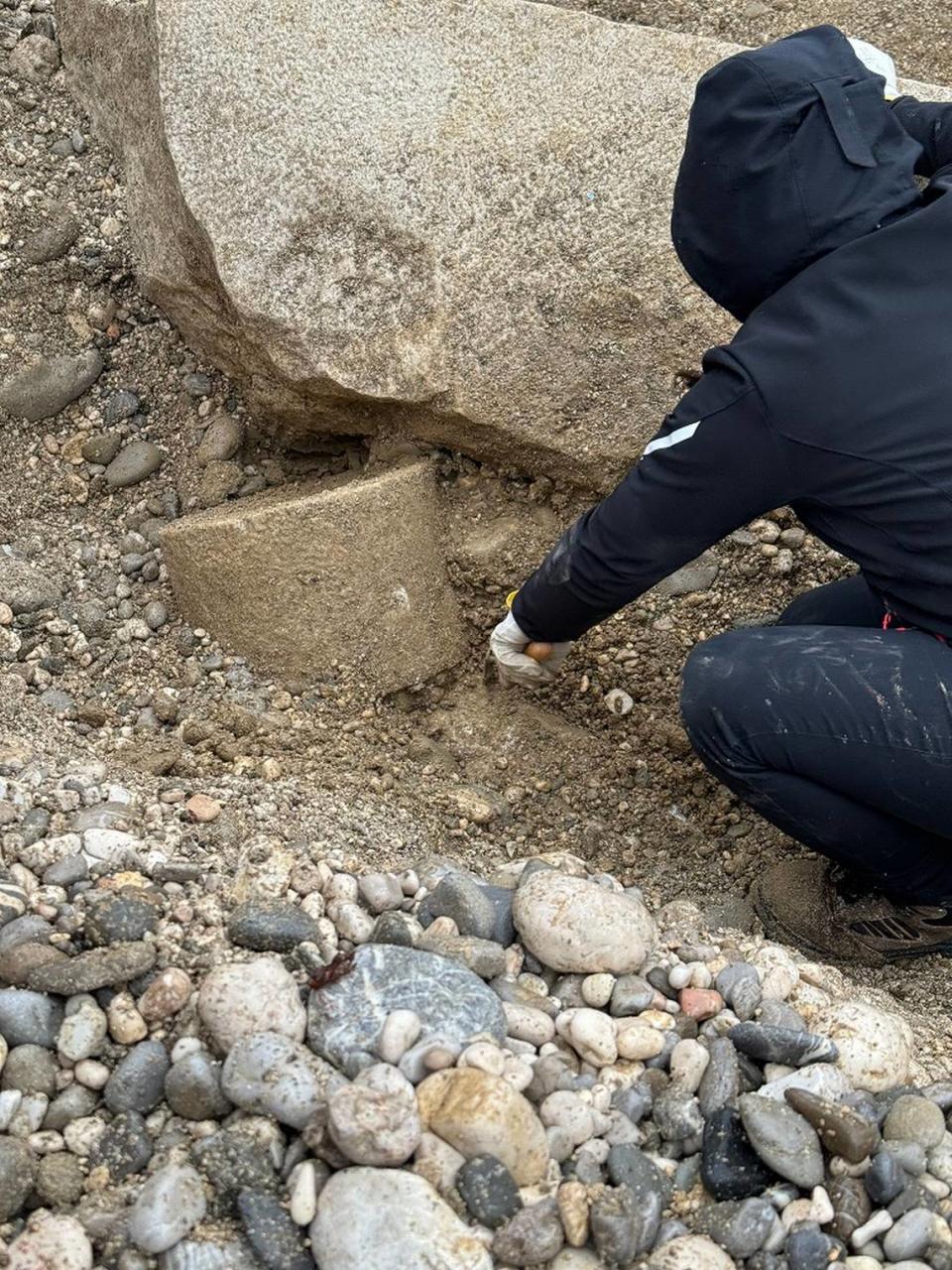Man stumbles on ancient Roman artifact — weighing 13,000 pounds — in riverbed. See it
Buried in a rocky riverbed in northern Italy sat a forgotten ancient artifact. The artifact certainly wasn’t intended to be forgotten. It was too big and ostentatious for that. But the waterway and the passing centuries had prevailed over the ancient stone.
Not anymore.
Ervino Silvestri spotted the ancient artifact in the gravel of the Torre river in San Vito al Torre and alerted officials, the Superintendency of Archaeology, Fine Arts and Landscape of Friuli Venezia Giulia said in a Feb. 22 news release.
Archaeologists excavated the riverbank and unearthed a massive block of carved limestone. They identified it as an ancient Roman funeral monument.
The monument weighed about 13,000 pounds, archaeologists said. One corner of the rectangular monument was chipped, but the rest was generally intact.

Uncover more archaeological finds
What are we learning about the past? Here are three of our most eye-catching archaeology stories from the past week.
→ 'Unusual' stones on seafloor turn out to be 'thrilling' 11,000-year-old trap in Germany
→ Tractor driver hits stone — and opens 1,700-year-old Roman tomb in Bulgaria. See it
→ 3,500-year-old shipwreck — one of world's oldest — sank carrying items in hot demand
One end had a carved figure of Erotes holding a torch and poppy flower, symbols of eternal sleep or death, officials said. A photo shows the figure inside a carved frame.
Erotes was a figure of ancient Roman mythology comparable to Cupid or Eros, according to Britannica. Although generally the god of love, Eros could represent different symbols in different contexts.
Archaeologists also found an inscription on the ancient Roman monument but did not provide a translation.

The decoration style indicated the monument was from the high imperial era. Archaeologists did not give a specific date range, but, according to National Geographic, ancient Rome’s imperial era lasted from 27 B.C. to 476 A.D., peaking in 117 A.D.
The stone monument was so heavy that an excavator was needed to move it, officials said. Photos show this process. The artifact was placed in a temporary shelter for cleaning and further study.

Excavations of the gravel riverbed also uncovered a stone urn, a limestone carving of a man’s face, other limestone artifacts, bricks and tile pieces, archaeologists said. Photos shared by officials in a Feb. 22 Facebook post show some of these finds.
San Vito al Torre is about 300 miles northwest of Rome and near the Italy-Slovenia border.
Google Translate was used to translate the news release and Facebook post from the Superintendency of Archaeology, Fine Arts and Landscape of Friuli Venezia Giulia.
Metal detectorist stumbles on 4,000-year-old weapon while walking to his car. See it
Medieval church — lost for centuries — reemerges at iconic site in Venice, photos show
Metal detectorist unearths ‘one-of-a-kind’ gold treasure from 1,400 years ago. See it

